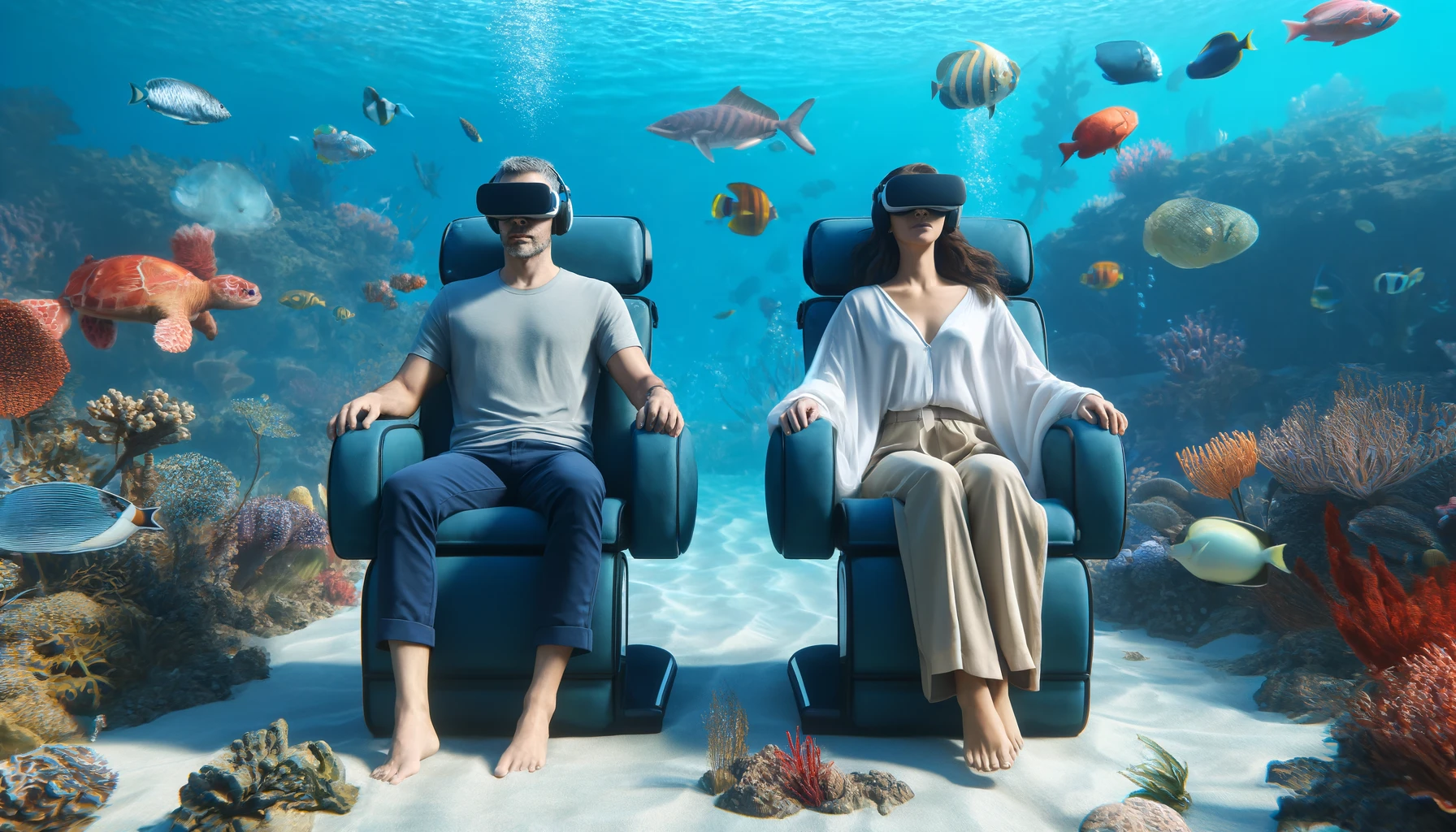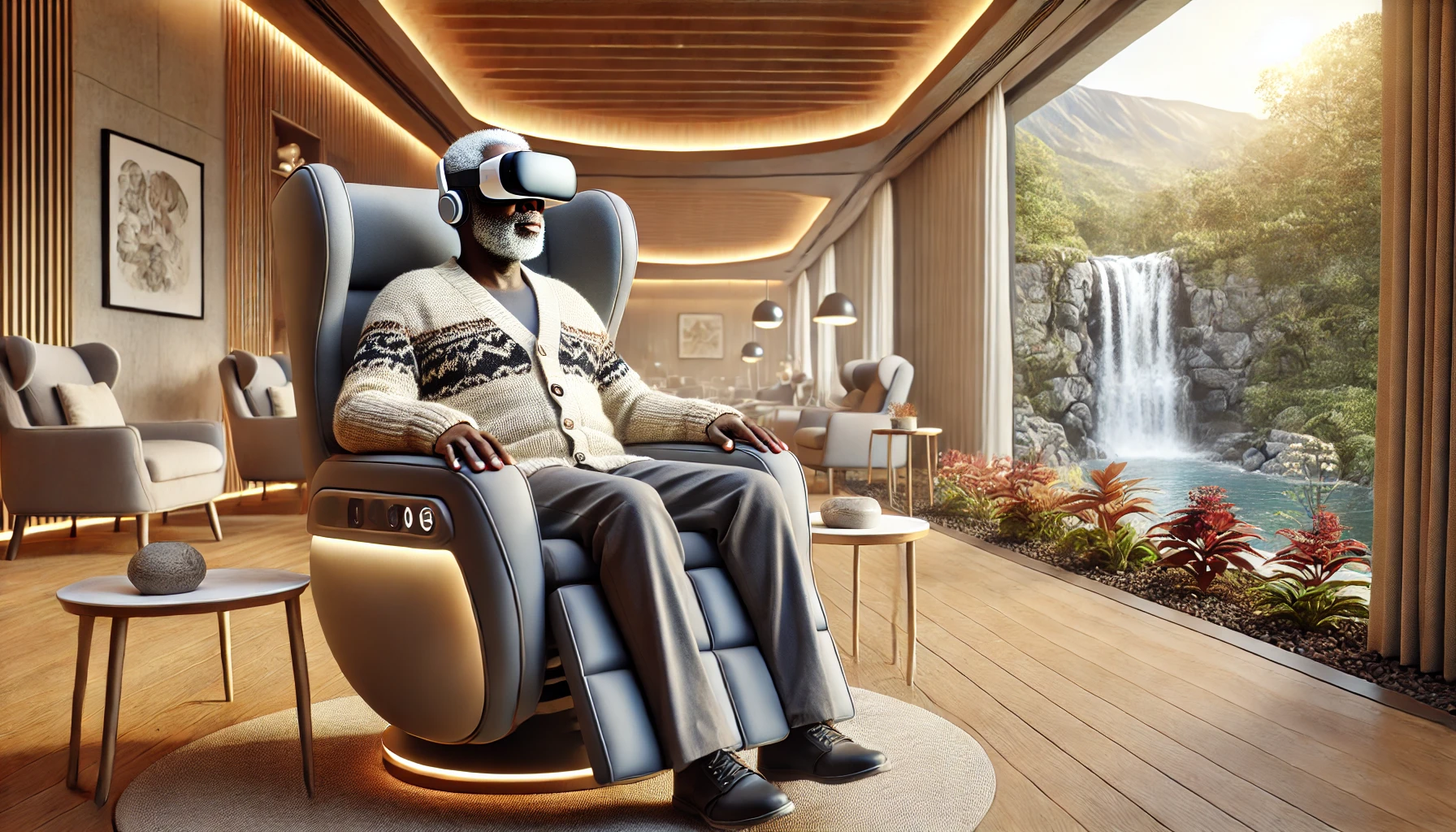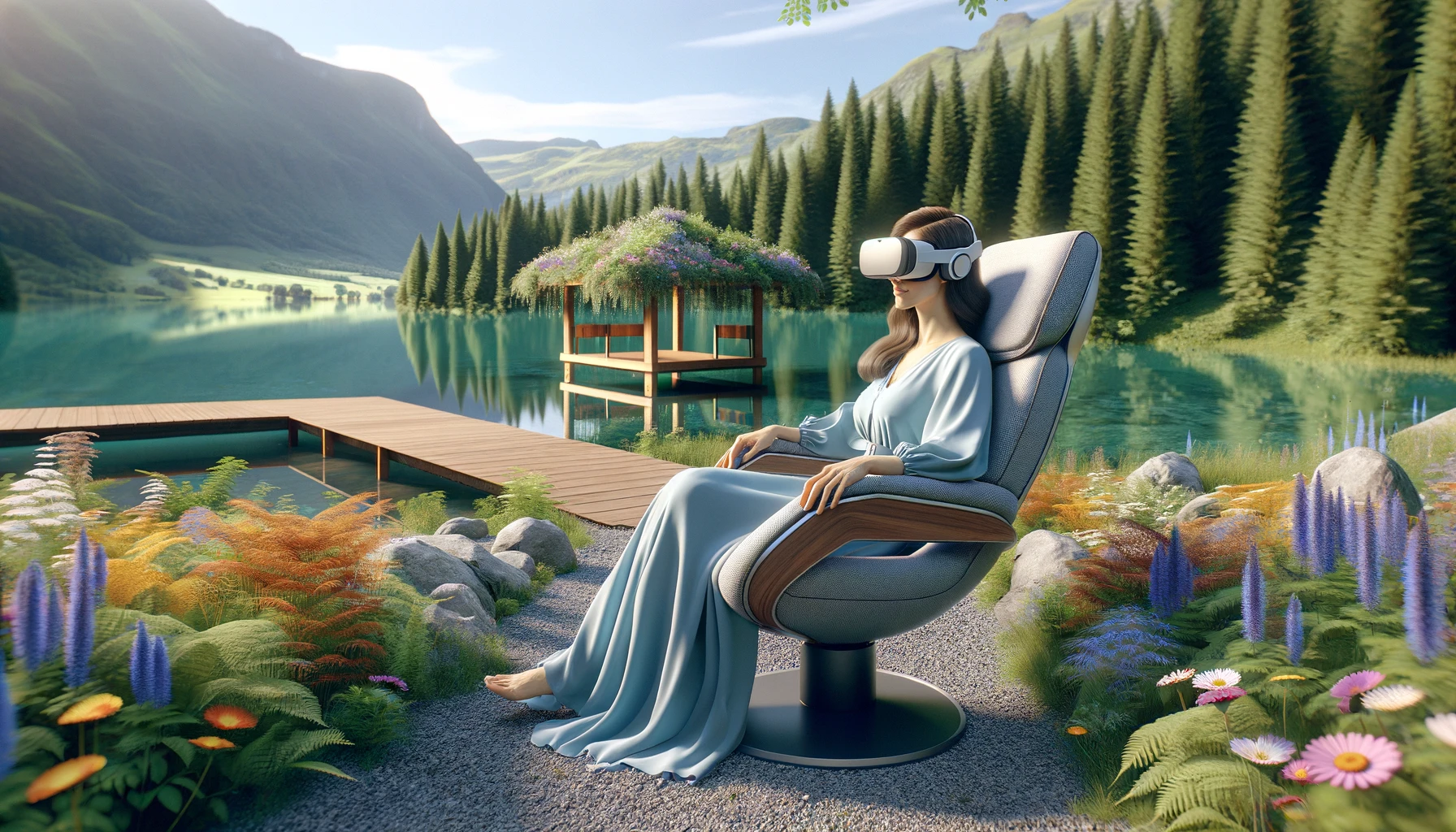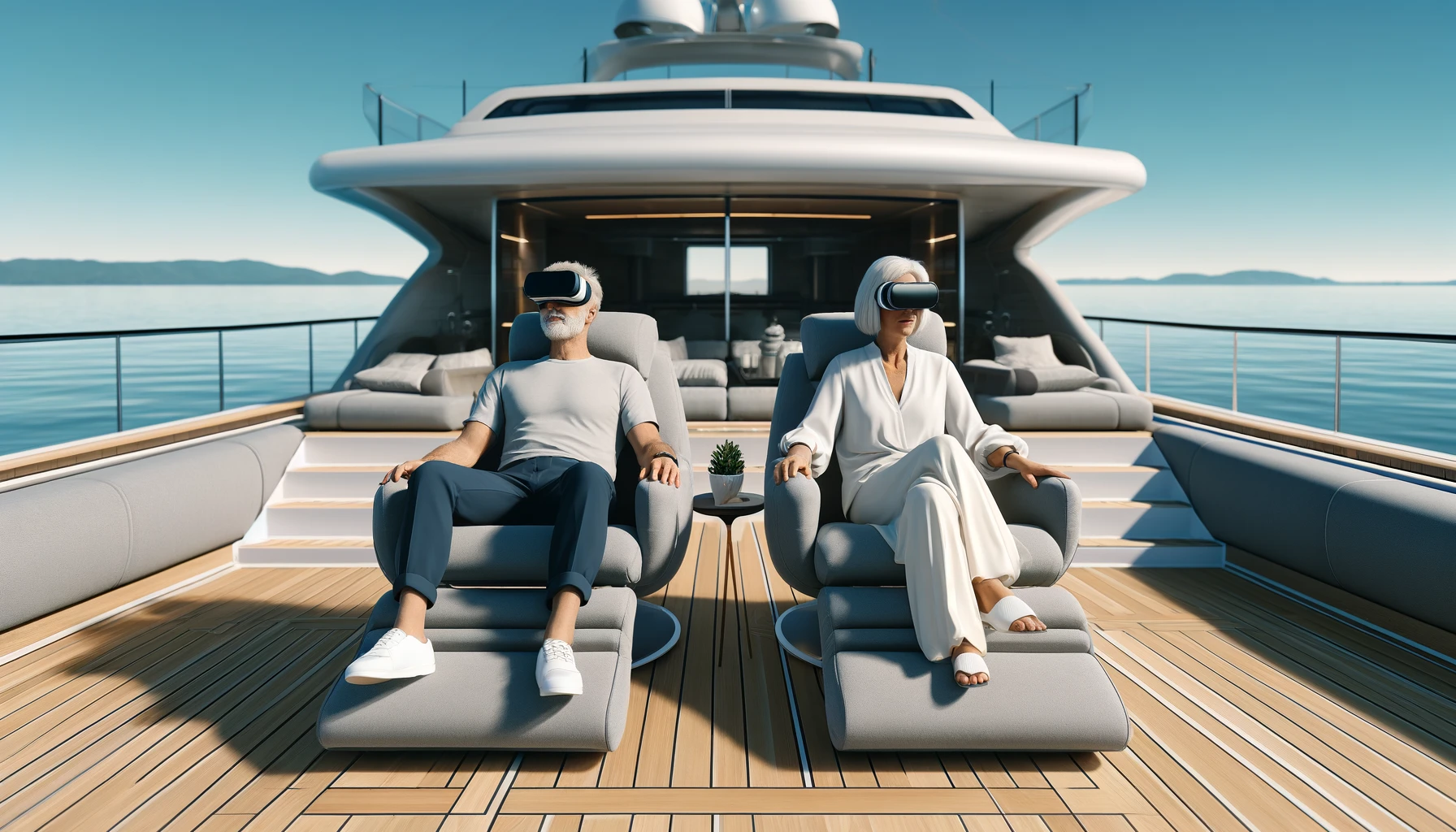The Transformative Power of VR Technology in Mental Healthcare
In recent years, Virtual Reality (VR) technology has emerged as a powerful tool with the potential to revolutionize mental healthcare. One platform...
4 min read
 Nerdle
:
Jun 25, 2024 10:00:00 AM
Nerdle
:
Jun 25, 2024 10:00:00 AM

In the fast-paced and high-pressure environment of modern workplaces, maintaining mental wellbeing is more important than ever. As companies increasingly recognize the importance of mental health, innovative solutions are being sought to create supportive and engaging work environments. One such revolutionary approach is the use of immersive experiences. From virtual reality (VR) to augmented reality (AR) and immersive audio, these technologies are transforming how businesses approach mental wellbeing. This article explores the various ways immersive experiences are making a significant impact on mental health in the workplace.
Immersive experiences involve using technology to create a simulated environment that fully engages the user's senses. VR and AR are the most well-known forms of this technology. VR creates a completely digital environment that users can interact with using headsets and sometimes additional equipment like hand controllers. AR overlays digital information onto the real world through devices like smartphones or AR glasses. Additionally, immersive audio technology can create spatial soundscapes that enhance the sense of presence in both VR and AR environments.
As technology advances, immersive experiences are becoming more accessible and cost-effective for businesses of all sizes. Initially popular in gaming and entertainment, these technologies are now being integrated into corporate wellness programs, training, and team-building activities. Companies are recognizing that immersive experiences can offer unique and effective solutions for improving mental health and overall workplace satisfaction.
One of the most significant benefits of immersive experiences is their ability to reduce stress and anxiety. VR meditation and relaxation apps transport employees to tranquil environments, such as serene beaches or peaceful forests, providing a break from the pressures of work. These virtual escapes can be accessed during short breaks, helping employees to recharge and return to their tasks with a clearer mind.
Immersive experiences can enhance traditional mindfulness and meditation practices by providing guided sessions in captivating environments. VR mindfulness apps often include guided meditations that help users focus their thoughts and achieve a state of calm. The immersive nature of these experiences can make it easier for employees to concentrate and stay engaged in their mindfulness practices, leading to more effective stress reduction and mental clarity.
Immersive experiences can also be used to build resilience and improve emotional regulation. By simulating challenging scenarios in a controlled environment, VR can help employees practice their responses to stressors without real-world consequences. For example, VR training modules can simulate difficult conversations or high-pressure situations, allowing employees to develop coping strategies and emotional intelligence in a safe setting.
Some immersive technologies incorporate biofeedback, where physiological data such as heart rate and skin conductance are monitored in real-time. This data can be used to tailor the immersive experience to the user's current state, providing personalized interventions to help manage stress and improve emotional regulation. Employees can gain insights into their physical responses to stress and learn techniques to control these responses more effectively.
Fostering strong social connections and team cohesion is crucial for a positive work environment. Immersive experiences offer innovative ways to bring teams together, even in remote or hybrid work settings. Virtual team-building activities, such as VR escape rooms or collaborative AR projects, can strengthen relationships and improve communication among team members. These activities encourage collaboration, problem-solving, and trust-building in a fun and engaging manner.
For remote workers, feelings of isolation and disconnection can be significant challenges. Immersive experiences can bridge this gap by creating virtual spaces where remote employees can interact as if they were physically present. Virtual reality meetings and social hangouts provide a sense of presence and immediacy that traditional video conferencing cannot match. This enhanced interaction can lead to better team cohesion and a stronger sense of belonging among remote employees.
Immersive experiences can be tailored to meet the specific needs of individual employees, making wellness programs more effective. VR and AR applications can offer customized relaxation and stress management tools based on personal preferences and stress levels. For instance, some employees might benefit from guided VR meditation, while others might prefer interactive AR games that promote relaxation and mental engagement.
One of the advantages of immersive experiences is their accessibility. Employees can access these mental health resources anytime and anywhere, providing continuous support for their wellbeing. This flexibility ensures that employees can incorporate mental health practices into their daily routines, making it easier to maintain a balanced and healthy work-life dynamic.
While the benefits of immersive experiences are clear, there are challenges to widespread adoption. Technological barriers, such as the cost of VR headsets and AR devices, can be a hurdle for some companies. However, as technology advances and becomes more affordable, these barriers are likely to diminish. Additionally, companies can start with more cost-effective solutions, such as mobile-based AR apps, before investing in more advanced equipment.
It is essential to ensure that immersive experiences are inclusive and accessible to all employees. This includes considering the needs of employees with disabilities and those who may not be comfortable with certain types of technology. Developing a variety of immersive solutions and providing training and support can help ensure that all employees can benefit from these innovations.
As we look to the future, it is clear that immersive experiences will continue to play a significant role in revolutionizing mental wellbeing in the workplace. With ongoing advancements in technology, the possibilities for enhancing employee mental health and creating supportive work environments are limitless. Companies that embrace these innovations will not only see improvements in employee wellbeing but also in productivity, engagement, and overall job satisfaction.
Immersive experiences are transforming the landscape of mental wellbeing in the workplace. By reducing stress, enhancing mindfulness, building resilience, and fostering social connections, these technologies offer powerful tools for supporting employee mental health. As companies continue to adopt and integrate immersive experiences, the workplace of the future will be one that prioritizes and nurtures mental wellbeing, leading to happier, healthier, and more productive employees.
VRenity is at the forefront of transformative therapeutic technology, crafting immersive experiences that envelop the senses and foster tranquility. Our innovative solutions are set to revolutionize the way individuals engage with mental wellness, utilizing the latest in audio and visual technology across popular VR platforms. Prepare for a new dimension in wellness, where serene soundscapes meet dreamlike visuals, all within the reach of your VR headset.

In recent years, Virtual Reality (VR) technology has emerged as a powerful tool with the potential to revolutionize mental healthcare. One platform...

In the ever-evolving landscape of mental health treatment, virtual reality (VR) has emerged as a powerful tool, offering innovative solutions for...

VRenity.com's cutting-edge immersion technology is revolutionizing the way therapy is approached for military veterans and individuals who have...